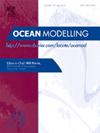Assessment of projected changes in mean and extreme wave power across the Indian coastal sectors under high-emission climate scenarios
IF 2.9
3区 地球科学
Q2 METEOROLOGY & ATMOSPHERIC SCIENCES
引用次数: 0
Abstract
Projected changes in oceanic and atmospheric conditions due to climate change necessitate a detailed assessment of future wave power (WP) variations along India’s extensive coastline for sustainable energy development and coastal adaptation. This study examines the projected changes in mean and extreme WP along the Indian coastline, with a regional focus on the Arabian Sea, the Bay of Bengal, Lakshadweep, and Andaman and Nicobar Island, under future climate scenarios SSP126 and SSP585 for the period 2071–2100. The Arabian Sea and southern coastal regions exhibit considerable wave energy potential, but expected decreases in WP and increased variability index (VI) pose challenges for long-term exploitation. Key regions such as Gujarat, the Andaman and Nicobar Islands, and Lakshadweep demonstrate substantial variability in WP, with higher variability in future scenarios under SSP5–8.5. Site-specific assessments across 20 locations identified Veraval (Gujarat), Hut Bay (Andaman), and Agatti, Minicoy, and Kalpeni (Lakshadweep) as key sites with both high mean and extreme WP values, characterized by consistently elevated energy levels and stable variability indicating strong potential for reliable wave energy extraction. The findings underscore the importance of integrating climate change projections into strategic energy planning, with a focus on region-specific assessments to ensure sustainable and resilient wave energy development.
高排放气候情景下印度沿海地区平均和极端海浪能的预估变化评估
由于气候变化对海洋和大气条件的预估变化,有必要对印度广阔海岸线上未来波浪能(WP)的变化进行详细评估,以促进可持续能源开发和沿海适应。本研究探讨了2071-2100年期间,在未来气候情景SSP126和SSP585下,印度海岸线平均和极端WP的预估变化,区域重点是阿拉伯海、孟加拉湾、拉克沙群岛和安达曼和尼科巴岛。阿拉伯海和南部沿海地区具有相当大的波浪能潜力,但预期的WP下降和变异性指数(VI)的增加对长期开发构成了挑战。古吉拉特邦、安达曼和尼科巴群岛以及拉克沙群岛等关键地区的WP表现出相当大的变动性,在SSP5-8.5的未来情景中变动性更高。对20个地点的具体评估确定,Veraval(古吉拉特邦)、Hut Bay(安达曼)、Agatti、Minicoy和Kalpeni (Lakshadweep)是具有高平均和极端WP值的关键地点,其特征是能量水平持续升高和稳定的变化,表明可靠的波浪能提取潜力巨大。这些发现强调了将气候变化预测纳入战略能源规划的重要性,重点是针对特定区域的评估,以确保可持续和有弹性的波浪能开发。
本文章由计算机程序翻译,如有差异,请以英文原文为准。
求助全文
约1分钟内获得全文
求助全文
来源期刊

Ocean Modelling
地学-海洋学
CiteScore
5.50
自引率
9.40%
发文量
86
审稿时长
19.6 weeks
期刊介绍:
The main objective of Ocean Modelling is to provide rapid communication between those interested in ocean modelling, whether through direct observation, or through analytical, numerical or laboratory models, and including interactions between physical and biogeochemical or biological phenomena. Because of the intimate links between ocean and atmosphere, involvement of scientists interested in influences of either medium on the other is welcome. The journal has a wide scope and includes ocean-atmosphere interaction in various forms as well as pure ocean results. In addition to primary peer-reviewed papers, the journal provides review papers, preliminary communications, and discussions.
 求助内容:
求助内容: 应助结果提醒方式:
应助结果提醒方式:


